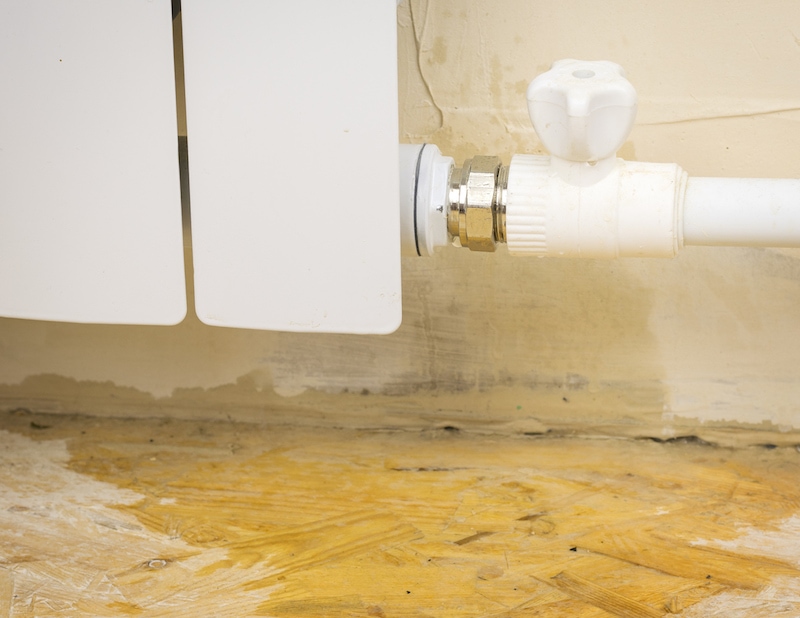Identify the Six Commonest Leak Triggers Inside Your Home
Identify the Six Commonest Leak Triggers Inside Your Home
Blog Article
What are your thoughts on How to Find Water Leaks?

Leakages not only create waste of water however can also trigger unnecessary damages to your residence and promote undesirable natural development. Water leaks may go undetected given that most of the pipework in our home is concealed. By understanding and looking for day-to-day situations that create leakages, you can protect your residence from future leaks and also unneeded damage. Today, we will certainly check out 6 leak creates that might be causing your pipes to leak.
Intruding roots
The majority of water leaks begin outside your house rather than inside it. If you see a sudden reduction in water stress, state in your tap, take some time to go out and examine your yard. You might discover damp patches or sinkholes in your backyard, and that may imply that tree roots are invading water lines causing water to seep out. You can have your plumber look for breach, especially if you have trees or hedges near your building.
Corroded water systems
This might be the reason of staining or warping on your water pipelines. If our plumbing system is old, take into consideration changing the pipes since they are at a greater threat of corrosion than the more recent versions.
Defective Pipe Joints
The factor at which your pipes connect is frequently the weakest web link in the waterline. Pipe joints can degrade in time, leading to water leakages. Sadly, the majority of pipeline joints are not conveniently noticeable. If you have loud pipes that make ticking or banging noises, especially when the warm water is activated, your pipe joints are most likely under a lot of pressure. It is a good idea to have your plumber evaluate your system annually.
Immediate temperature level modifications.
Extreme temperature changes in our pipelines can create them to broaden and also get all of a sudden. This expansion and contraction may cause splits in the pipelines, particularly if the temperature level are below freezing. It would be best if you kept an eye on exactly how your plumbing works. The existence of the formerly mentioned conditions frequently suggests a high danger.
Poor Water Connectors
At times, a leakage can be caused by loose tubes and pipes that provide your home appliances. In instance of a water links leakage, you might see water running directly from the supply line or puddles around your appliances.
Clogged Drains
Clogged drains pipes may be aggravating and inconveniencing, yet they can in some cases end up creating an overflow bring about break pipelines. Keep eliminating any type of materials that might drop your drains pipes that can clog them to avoid such inconveniences.
All the above are reasons for leaks yet not all water leaks arise from plumbing leaks; some leakages may come from roofing system leaks. All leaks need to be fixed instantly to avoid water damages.
Leaks not only cause waste of water however can additionally create unnecessary damages to your residence as well as advertise unwanted organic growth. By comprehending and also looking for daily situations that create leakages, you can shield your house from future leakages and also unnecessary damages. Today, we will certainly look at 6 leak triggers that may be triggering your pipes to drip.
At times, a leakage can be triggered by loosened pipes as well as pipes that provide your devices. In situation of a water links leakage, you might observe water running directly from the supply line or pools around your home appliances.
How To Check For Water Leak In Your Home
How To Check for Leaks
The average household's leaks can account for nearly 10,000 gallons of water wasted every year and ten percent of homes have leaks that waste 90 gallons or more per day. Common types of leaks found in the home are worn toilet flappers, dripping faucets, and other leaking valves. These types of leaks are often easy to fix, requiring only a few tools and hardware that can pay for themselves in water savings. Fixing easily corrected household water leaks can save homeowners about 10 percent on their water bills.
To check for leaks in your home, you first need to determine whether you're wasting water and then identify the source of the leak. Here are some tips for finding leaks:
Take a look at your water usage during a colder month, such as January or February. If a family of four exceeds 12,000 gallons per month, there are serious leaks.
Check your water meter before and after a two-hour period when no water is being used. If the meter changes at all, you probably have a leak.
Identify toilet leaks by placing a drop of food coloring in the toilet tank. If any color shows up in the bowl after 10 minutes, you have a leak. (Be sure to flush immediately after the experiment to avoid staining the tank.)
Examine faucet gaskets and pipe fittings for any water on the outside of the pipe to check for surface leaks.
Undetected water leaks can happen without the home or business owner even realizing. If you suspect a water leak, but not able to find the source. It is time to contact a professional water leak detection service, The Leak Doctor.
How To Find a Water Leak In Your Home
https://www.leakdoctor.com/blog/How-To-Check-For-Water-Leak-In-Your-Home_AE197.html

Hopefully you enjoyed our article on How to detect water leaks in your home. Many thanks for taking the time to read through our posting. In case you enjoyed reading our blog entry please be sure to pass it around. We love reading our article about How to Find Water Leaks.
For instant relief, call. Report this page